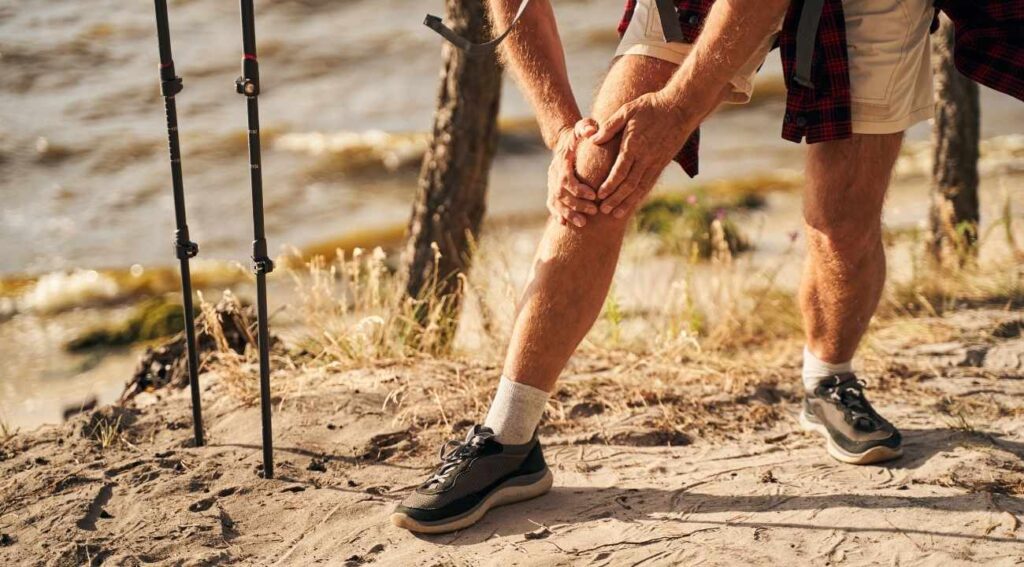One of the most unappreciated parts of our body is our knees. Our knees support our whole body in many different ways, such as providing stability, acting as a shock absorber, helping the body move forward, supporting the body to stay upright, and helping to lower and raise the body.
That means if you end up getting hurt or develop a form of chronic pain in your knees, then it can affect the way you walk, run, and move for the rest of your life. These issues can be caused by sprains, fractures, meniscus tears, etc. Luckily, using knee braces can help support and relieve these kinds of pains.
Knee braces have become a popular treatment option for millions of people suffering from knee problems, both young and elderly. They’re cheap, easy to find, and comfortable to wear. And they come in a variety of different colors, designs, and styles so that you can find a brace that will perfectly fit you.
How To Put On A Knee Brace?
Before we go into the nitty-gritty of the different types of knee braces, their uses, etc., the first obvious question that would arise is, “how do you put on a knee brace?”. I’m glad you asked! Putting on a knee brace isn’t rocket science. It’s a straightforward process. However, some people don’t put on their braces correctly, leading to even more complications in the future. So, this is just a brief outline of how to put on a knee brace. But do keep in mind that different knee braces may require different methods to put them on.
- First, roll up your pant leg and then put the brace directly on top of the affected area.
- If you have a slip-on brace, then slide your leg through the top of the brace. On the other hand, if you have a wrap-style brace, then wrap the straps over your knee and lay inside of the pad against it.
- The front side of most braces will have a little hole to indicate which direction the brace should be worn. If the kneecap can be seen through this opening, then the brace is worn correctly. This will provide the most comfortable and allow the skin beneath the brace to breathe.
- If your compression sleeve has extra straps, wrap them over the rear of the brace and attach them with Velcro straps in the front to provide a secure fit. One or two fingers should be able to fit into the gap between your leg and the brace. If you can’t, you should somewhat loosen the brace.
What Are The Types Of Knee Braces?
According to medical professionals, there are two main reasons to wear knee braces: the first is for structural support, and the second is to relieve knee pain.
Physicians generally recommend knee braces for structural support for knee injuries or ACL tears. There are generally three types of knee braces for structural support:
- Functional braces: These braces are used to provide protection and stability to the knee after an injury.
- Rehabilitative braces: They limit the horizontal and vertical movement of the knee after an injury or surgery.
- Prophylactic braces: Prophylactic braces are specially designed braces that protect the knee while playing sports.
Although these are the primary kinds of knee braces, other types also exist with different functionalities. Physicians determine which kind of knee brace would be best suited for you by looking at which ligaments are injured, what form of rehabilitation is required, and what activity you are participating in. So, before you go and pick a knee brace for yourself, first consult with a physician.

As for knee braces for pain relief, they are mainly for people who suffer from chronic knee pain. And just like structural support knee braces, there are a few types to consider as well. They are:
- Unloader braces: These braces are designed to reduce discomfort in patients who suffer from knee arthritis and other chronic pains. They redistribute the weight of the knee from the injured area to a more robust place.
- Knee sleeves: Although they are not technically braces, these sleeves help provide much-needed compression around the knee joint, which can alleviate pain and control swelling.
How To Measure For A Knee Brace?
Having a knee brace that fits you properly is critical when it comes to stabilizing your knee. Otherwise, it can lead to further complications in the future. So, it’s crucial that you correctly measure your knee before getting a knee brace. And after you do, you should consult with your physician to check if you have your knee brace on correctly. To measure your knee, all you need is tape and the help of another person. Here is a guide on how you can measure your knee brace.
- You should be in your regular standing position while measuring for a knee brace.
- Find the center of your kneecap. Have your aide set the measuring tape’s end on that location and then wind the tape around your knee until it returns to the tape’s end. Measure the spot where the tape intersects.
- Determine the most painful area and mark it with a felt marker. A measurement of your leg above and below this location is required. To do this, have your aide measure 6 inches away from the damaged region and mark it with the felt marker. Then have your aide measure your leg where you’ve marked it. Repeat this process for the lower part of your knee as well.
- Make sure to keep the measuring tape leveled and tight without any slack. However, don’t make it so tight that it will cut off circulation around your leg.
- If you are purchasing a knee brace online, look up your chosen brace’s size chart. You can easily find the size chart of a knee brace by searching for it on the internet, as almost every company maintains one. But if you can’t find one, then you should look at other options.
- Like other pieces of clothing, knee braces come in small, medium, large, and extra-large sizes. You can either try out the different sizes from a shop or compare your measurements to the online sizing chart to get the best fit. But sometimes, your exact measurement may fall somewhere between the two sizes offered by the sizing chart. In those cases, we recommend that you choose the larger size rather than the smaller one.
Frequently Asked Questions
Q. How to care for your knee brace?
Check your knee brace for signs of wear and tear on a regular basis. The straps and stitching will start to wear out, and the product’s functionality may be jeopardized. Regular washing will keep it odor-free and in good condition, but read the cleaning directions first. Your best bet is probably a cold water hand wash with minimal detergent. Before storing it, make sure it’s completely dry. Check for any damage to the hinges or stays, and make sure there’s no dirt accumulation in any of the joint sections.
Q. How tight should a knee brace be?
The rule of thumb is that your knee brace should be tight enough to the point where you can insert two of your fingers in between them when worn. If you can insert more than two fingers, then your brace is too loose. On the other hand, if you can’t fit in any of your fingers, then your brace is too tight.
Q. How long should you wear a knee brace?
The best way to know how long you should wear your knee brace is by asking your doctor. In general, you should wear your brace for at least a week. Additionally, you should also consult with your physician about how often you can take off your brace for ease of movement.
Q. How to keep your knee brace from slipping down?
A common complaint by many people is that their knee braces keep slipping down and moving out of place. While most braces feature a non-slip silicone ring to keep them in place, a self-adhesive bandage can also do the trick. To keep the knee brace in place, add a small quantity of this adhesive bandage below it. That way, your brace will not slip off when you are moving around.
Q. Are there any drawbacks to wearing a knee brace?
Not really, as it is generally safe to use for medical and health reasons. However, there are a few things that you should keep in mind. First, make sure that your knee brace isn’t too tight or too loose, as that can lead to further complications. Next, do not wear the knee brace longer than the recommended amount of time as that can lead to skin abrasions. And finally, make sure to keep your knee brace clean as you will be wearing it for a prolonged period of time. If your brace is dirty or grimy, then there is a chance that it can affect your skin.
Whether you are suffering from arthritis or experiencing knee pain from an injury, a knee brace can help deal with those problems. If you have read until this point, then you should know that there are many different styles of knee braces. Hence, picking the right one is crucial for you.
Consult with your doctor before you decide what type of knee brace you should get, check the measurements, and get a final verdict after buying your brace. You can use this article as a reference point as it covers most of the vital information that you would need. If you have further questions or concerns, you should consult with your physician as they will give you an answer specific to your needs.

Robert Coleman, in one word is a multitasker. He enthusiastically works as an outdoor guide. He also has led large groups for backpacking at Bogota in Columbia. Hours of research and field experiences have helped him to stand as one of the best professional reviewers for anything related to outdoors. He improvises in using the right tool rather than packing tons of unnecessary things while outdoors.









Leave a Comment